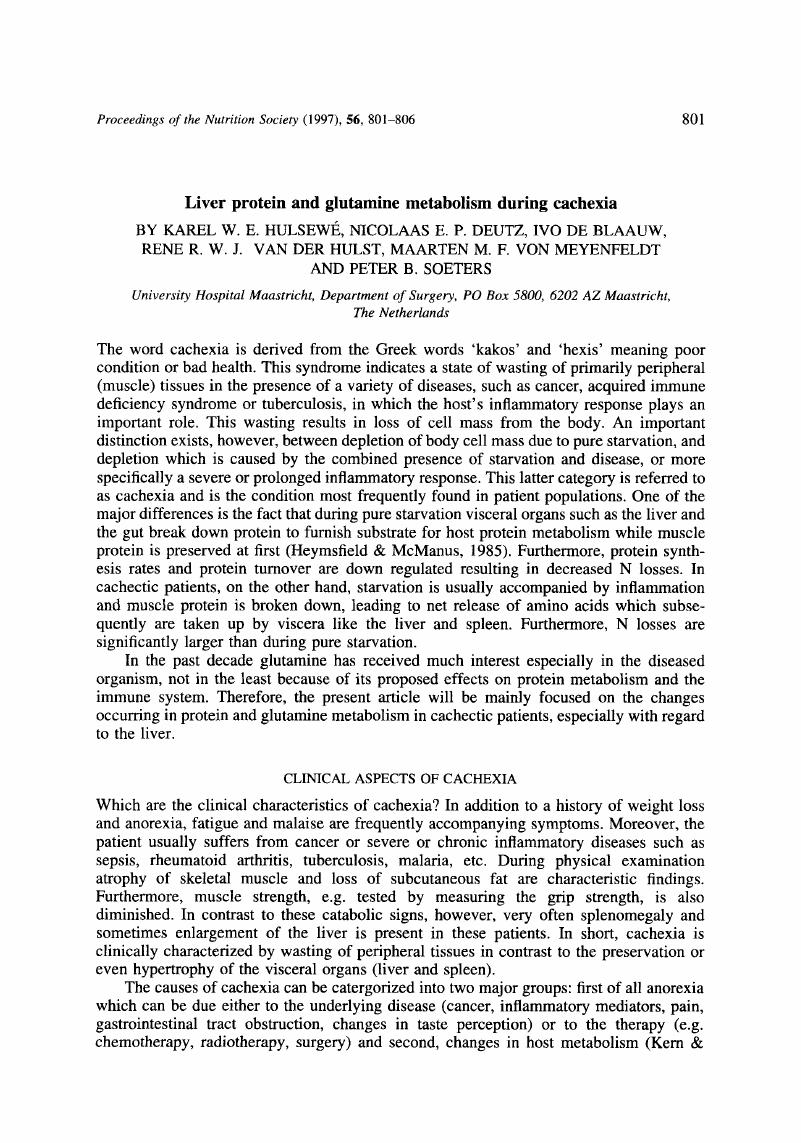Crossref Citations
This article has been cited by the following publications. This list is generated based on data provided by Crossref.
Watford, Malcolm
2000.
Glutamine and Glutamate Metabolism across the Liver Sinusoid.
The Journal of Nutrition,
Vol. 130,
Issue. 4,
p.
983S.
Mordier, Sylvie
Deval, Christiane
Béchet, Daniel
Tassa, Amina
and
Ferrara, Marc
2000.
Leucine Limitation Induces Autophagy and Activation of Lysosome-dependent Proteolysis in C2C12 Myotubes through a Mammalian Target of Rapamycin-independent Signaling Pathway.
Journal of Biological Chemistry,
Vol. 275,
Issue. 38,
p.
29900.
Corbello Pereira, Sandra Regina
Darronqui, Elaine
Constantin, Jorgete
da Silva, Mário Henrique da Rocha Alves
Yamamoto, Nair Seiko
and
Bracht, Adelar
2004.
The urea cycle and related pathways in the liver of Walker-256 tumor-bearing rats.
Biochimica et Biophysica Acta (BBA) - Molecular Basis of Disease,
Vol. 1688,
Issue. 3,
p.
187.
Yeh, Shing-Shing
Blackwood, Kimathi
and
Schuster, Michael W.
2008.
The Cytokine Basis of Cachexia and its Treatment: Are They Ready for Prime Time?.
Journal of the American Medical Directors Association,
Vol. 9,
Issue. 4,
p.
219.
Braga, M.
Ljungqvist, O.
Soeters, P.
Fearon, K.
Weimann, A.
and
Bozzetti, F.
2009.
ESPEN Guidelines on Parenteral Nutrition: Surgery.
Clinical Nutrition,
Vol. 28,
Issue. 4,
p.
378.
2009.
Animal Clinical Chemistry.
p.
37.
Koopmans, S. J.
van der Staay, F. J.
Le Floc'h, N.
Dekker, R.
van Diepen, J. Th. M.
and
Jansman, A. J. M.
2012.
Effects of surplus dietary L-tryptophan on stress, immunology, behavior, and nitrogen retention in endotoxemic pigs1.
Journal of Animal Science,
Vol. 90,
Issue. 1,
p.
241.
Abunnaja, Salim
Cuviello, Andrea
and
Sanchez, Juan
2013.
Enteral and Parenteral Nutrition in the Perioperative Period: State of the Art.
Nutrients,
Vol. 5,
Issue. 2,
p.
608.





